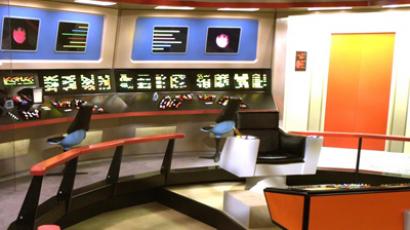First synthetic biological leaf could allow humans to colonize space

In order for humans to live in outer space, they must have a steady supply of oxygen they can depend on. Now, instead of relying on plants that may not survive, they can use an artificial biological leaf designed by a London graduate student.
Julian Melchiorri, a graduate student in innovation design engineering at the UK’s Royal College of Art, created the synthetic leaf, which he called the ‘Silk Leaf Project’. The design was for an RCA course offered in collaboration with Tufts University’s silk lab in Massachusetts.
Like the leaf from a real plant, the synthetic leaf uses photosynthesis to produce oxygen, by absorbing light, water and carbon dioxide. “The artificial leaves feature chloroplasts extracted from actual plant cells that are suspended in a material made from silk protein. So when given access to light and water they still produce oxygen, but they're better suited to surviving off our planet,” Gizmodo reported.
The protein-based material is extracted directly from the silk fiber. It’s used to stabilize organelles ‒ organic molecules within a cell, including chloroplasts ‒ within the material’s matrix, Melchiorri told Dezeen.com.
“I have the first photosynthetic material that was working and breathing as a leaf does,” he said.
The man-made leaf is lighter than the real thing, but better suited to long-term life in space because scientists don’t know if organic plants would survive and flourish outside our atmosphere the way humans would need them to. And if mankind is to colonize space, those living on another planet would need to produce their own O2 gas.
“So what if we could take those biological oxygen factories into space with us, but without all the land, sun, water, soil, and gravity that forests tend to require?,” CNet ponders. “This is the point where NASA and Elon Musk should probably start paying attention.”
The space agency is the designer’s ideal target, in fact.
"Plants don't grow in zero gravity," Melchiorri explained. "NASA is researching different ways to produce oxygen for long-distance space journeys to let us live in space. This material could allow us to explore space much further than we can now."
The design brings the natural efficiency of photosynthesis to a man-made material.
The graduate student also sees his leaf being used for interior design or for the ventilation system in a large building. The material would serve as a filter for the outside air, bringing oxygenated air into the structure.














